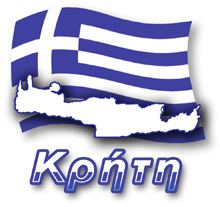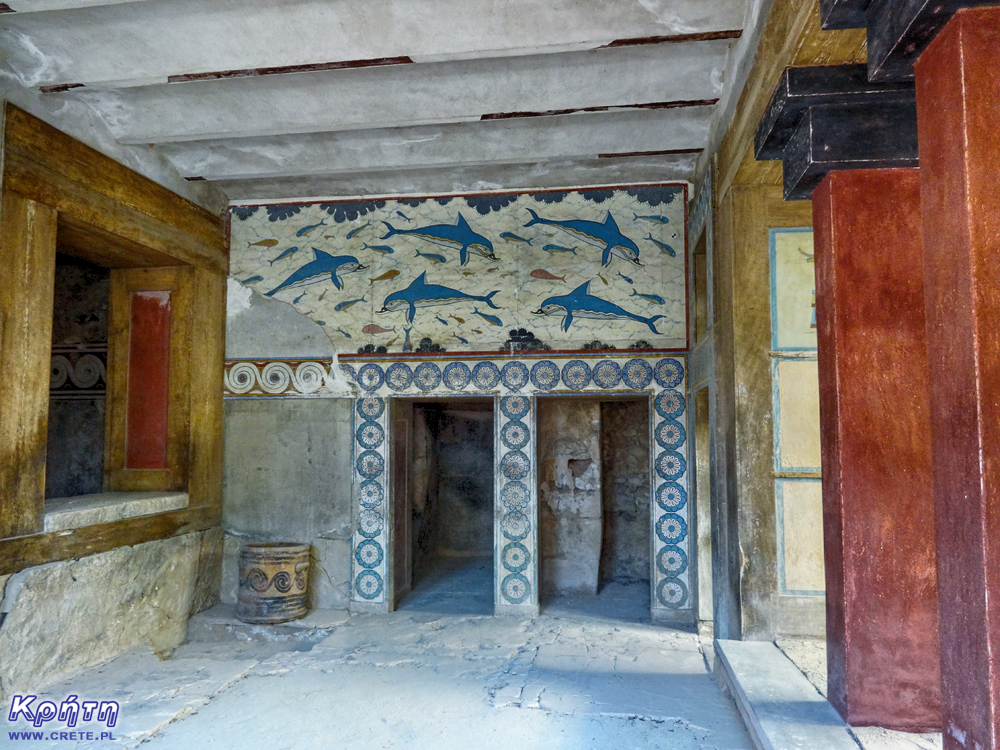
 2025-03-16 18:38:37
2025-03-16 18:38:37
125 years ago, on 16 March 1900, Sir Arthur Evans' workers began the first excavations at what is now the most visited archaeological site in Crete, the palace of Knossos. At the same time, it is one of the most controversial archaeological sites due to the way the discoverer dealt with the priceless ruins. On the occasion of today's anniversary, we would like to recall the history of the discovery of this place and the fact that it was not the famous Englishman who discovered Knossos.
In the second part of the article you will also find some information on the planned modernizations at the excavation site and increases in ticket prices, as well as a general summary of the activities of Knossos by Vasiliki Sythiakaki, head of the Ephorate of Antiquities in Heraklion.
The locals have long known that the Kefala hill, or Knossos, conceals the secrets of a distant history. Landslides that occurred here after heavy rains revealed fragments of a long-extinct civilization. After many centuries, fragments of old walls and picturesquely decorated clay vessels peeked back into the light of day, clearly suggesting what else the earth conceals in this place.
In April 1879, Minos Kalokairinos, a Greek merchant and antiquarian from Heraklion, gathered twenty workers to excavate part of the hill. During this initial cursory work, they unearthed 12 enormous pithoi, or large clay jars. However, for political reasons, the work was quickly interrupted. Kalokairinos did not keep his discovery a secret, and many scientists and foreign institutions quickly became interested. All of them began to apply for a concession to conduct excavations.
The rights to the hill were fought for not only by the French and Americans, but also by Heinrich Schliemann, who became famous for discovering Troy and Mycenae. Schliemann, in addition to having a considerable fortune, also had an archaeological nose. In 1883, he submitted an official request to the then Turkish authorities for permission to begin excavations on the hill of Knossos. This is yet another proof of the discoverer's instinct, because Schliemann had not even seen the hill in person until that point.
The owner of this plot initially demanded 100,000 francs for the opportunity to explore the entire area. However, in 1889 it was finally sold to Schleimann for just 40,000 francs. What was the catch with such a large discount? Well, in reality, the discoverer of Troy bought a much smaller part than he had originally planned. The first arrangements covered an area covered by 2,500 olive trees. However, the clever owner, in Schliemann's absence, reduced the land offered to just 888 trees. However, the famous German was not destined to make another spectacular discovery, because he died only a year later.

And here enters the scene Sir Arthur Evans, who is known to everyone for discovering the most famous Minoan palace in Crete. Evans regularly visited Crete at the end of the 19th century, where he conducted regular cave research. He also began to seek the rights to the famous hill that conceals the distant history of the Minoans.
In 1898, the Turks withdrew from the island and Evans took advantage of the political changes that occurred in Crete. Supported by the British consul and some Greeks, he began negotiations with the new autonomous government in Chania. Ultimately, Evans paid for Knossos and part of the valley surrounding the hill... 435 pounds. The flag of the United Kingdom flew over the newly purchased land, and workers employed by Evans dug the first shovels on March 16, 1900.
Although much of the work carried out by this British archaeologist is considered by modern scientists to be very primitive and brutal, it must be admitted without a shadow of a doubt that it was Sir Arthur Evans who had the greatest influence on the current character and appearance of these excavations.
The reconstructions themselves, considered by many to be barbaric, are not always assessed negatively. Vasiliki Sythiakaki, head of the Ephorate of Antiquities in Heraklion, presents a not very radical position on this issue: " Perhaps Evans was blamed for the renovation work carried out, but thanks to these reconstructions, visitors have the opportunity to see how the palace looked when it stood. This is also an element that fascinates visitors ."

Regardless of these concerns, Knossos remains Crete’s most popular tourist attraction. In 2024, the number of visitors exceeded one million, a record, and the palace attracts tourists of all categories. From cruise passengers who spend a few hours on the island, to beachgoers who want to see specific sites, including Knossos, to tourists with specific historical interests.
" It is very important that in recent years we have been visited very often by schools not only from Greece, but also from abroad, as part of educational trips. University students, scientists, archaeologists from all over the world come, regular guests come. In general, in Knossos we have a lot of tourists who often decide to visit this place for the second or even third time, " emphasizes Vasiliki Sythiakaki.

On this special anniversary, it is worth mentioning that Greece has been trying to have Knossos listed as a UNESCO World Heritage Site for a long time. The final decision is expected this summer. If this happens, it will be considered a national success, as the Heraklion region authorities say.
In addition to waiting for this groundbreaking decision for Knossos, a whole range of modernisation works are planned. They are to make this space more friendly to visitors and the infrastructure more modern. The expected scope of works is wide. The car park is to be rebuilt, from which pedestrians will be able to go to the excavation site via a pavement, without having to go down to the road. It is also planned to build modern buildings that will house ticket offices, luggage storage, sanitary facilities and even a doctor's office. It is also planned to create a multimedia zone where visitors will be able to obtain information about the space before entering it.
On the site itself, renovation work is planned for the King and Queen's apartments. The current routes for visitors will be improved, a new route leading to the theatre will be created. It is also planned to create a disabled access road in the central courtyard, as well as modernize safety measures.
Finally, unfortunately, it must be mentioned that from April 2025, the prices of tickets to the excavations in Knossos will be higher. In the summer season until October, the price of a ticket will increase from 15 to 20 euros. Thus, the most popular tourist attraction in Crete will also become the most expensive.
A little more information about Knossos.
 2025-03-16 18:38:37
2025-03-16 18:38:37
Komentarze
Wypełnij poniższy formularz aby dodać komentarz
lub kliknij w poniższy link aby skorzystać z możliwosci komentowania przez facebooka:
https://www.facebook.com/crete.poland/posts/1049842587190005